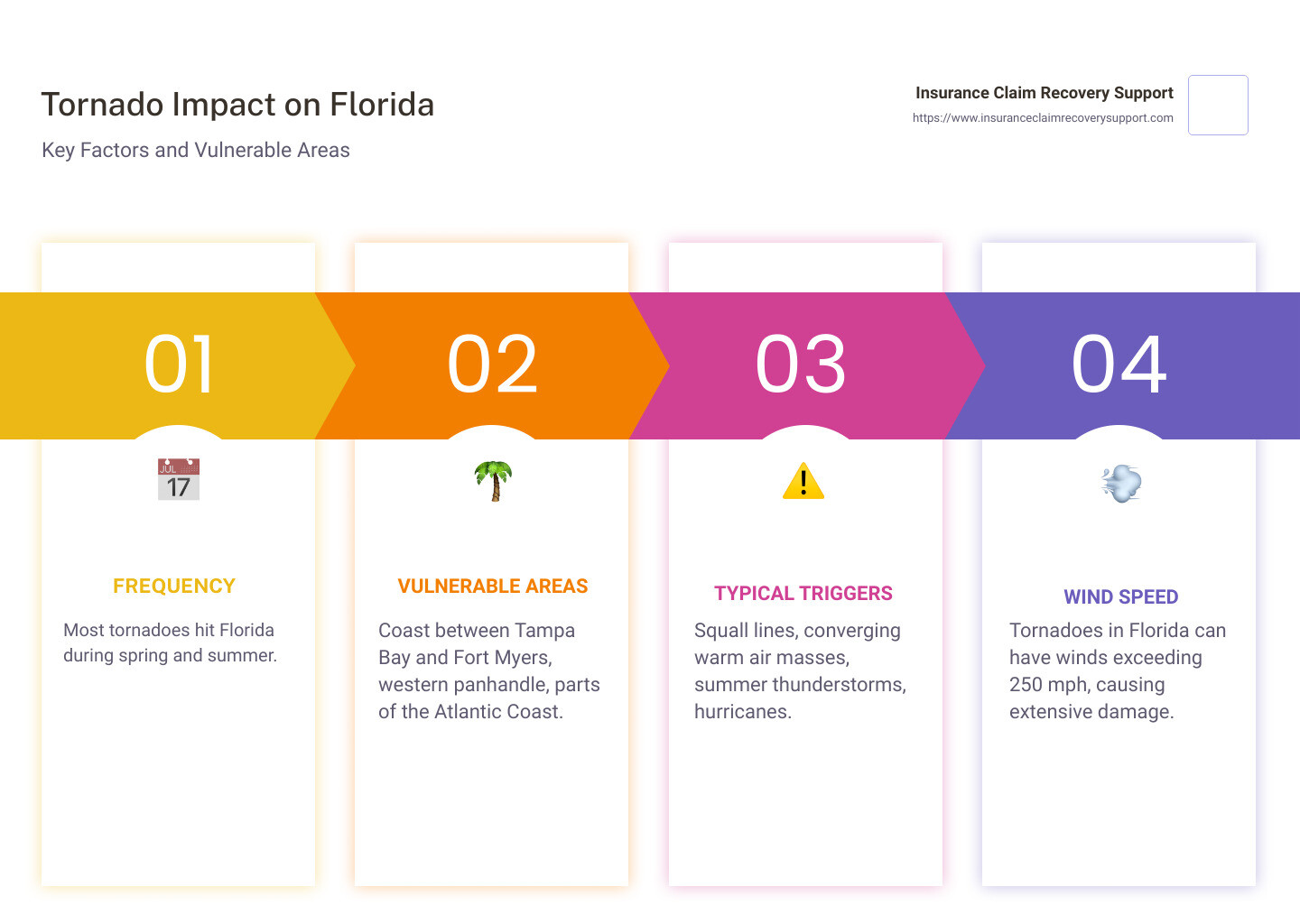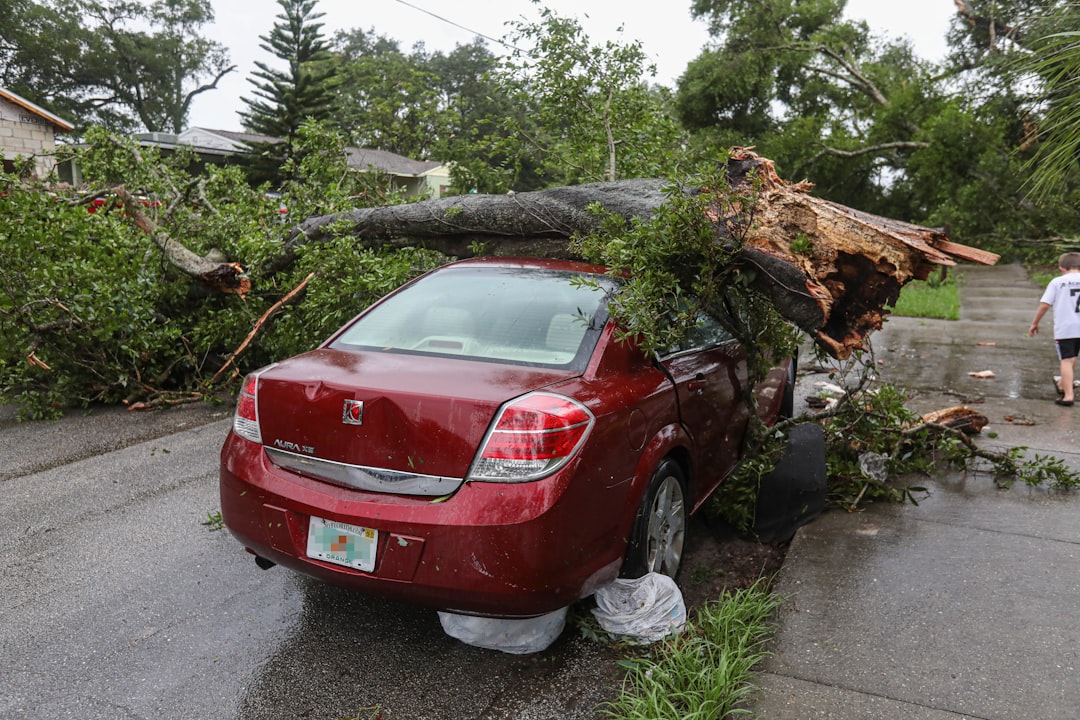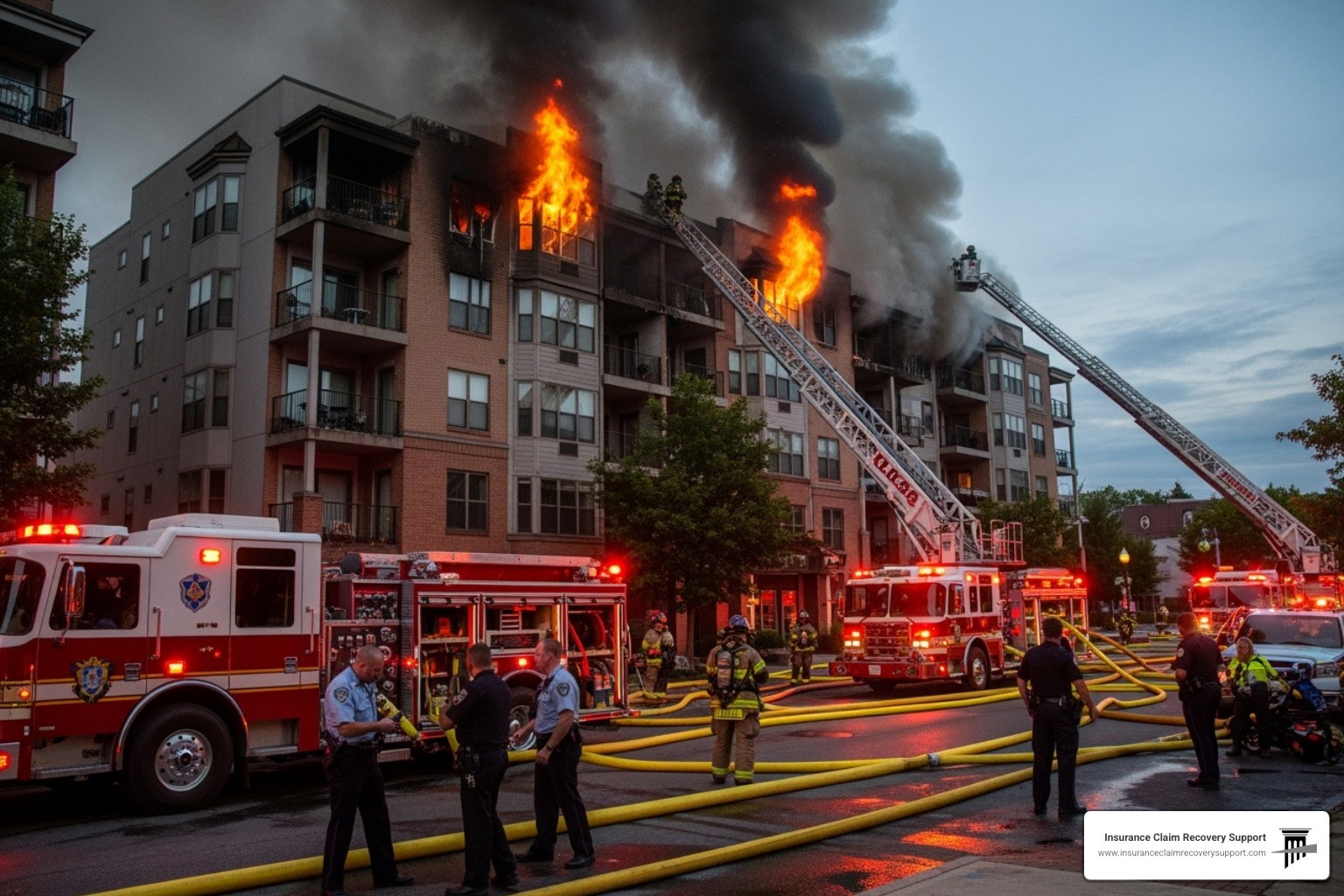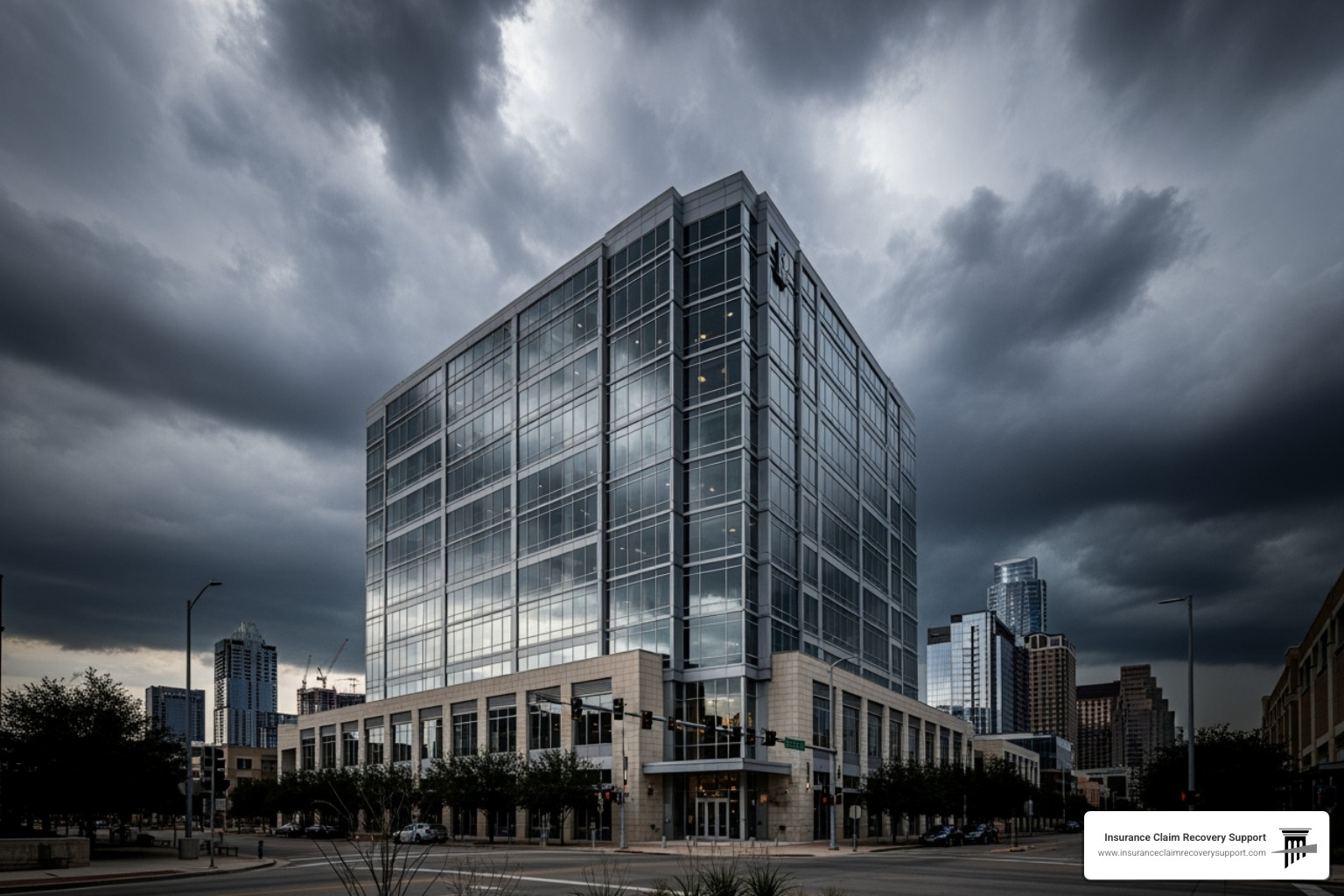The Impact of Tornadoes in Florida
Florida tornado damage is a significant concern for residents and property owners due to the state’s unique geographical and meteorological conditions. Here’s a quick look at key information:
- When Tornadoes Hit: Most frequent in spring and summer
- Especially Vulnerable Areas: Coast between Tampa Bay and Fort Myers, western panhandle, parts of the Atlantic Coast
- Typical Triggers: Squall lines, converging warm air masses, summer thunderstorms, hurricanes
A tornado is a violently rotating column of air that connects a thunderstorm to the ground, appearing in a funnel or column shape. These destructive forces can have winds exceeding 250 mph, causing extensive damage in seconds.
Florida experiences a high frequency of tornadoes, even more than Oklahoma, with spring being the peak season for the most powerful ones. Areas between Tampa Bay and Fort Myers, the western panhandle, and parts of the Atlantic Coast are particularly susceptible. Historical events show tornadoes causing substantial damage across Florida’s regions.
My name is Scott Friedson, and with over $250 million in large loss claims settled, my expertise in Florida tornado damage can help you navigate the complexities of insurance claims to ensure fair and prompt settlements.

Understanding Tornado Categories and Their Impact
The Enhanced Fujita Scale
Tornadoes are classified by the Enhanced Fujita (EF) Scale, which helps us understand their intensity and potential damage. This scale ranges from EF0 to EF5, with each category representing increasing wind speeds and corresponding damage.
EF0 tornadoes are the weakest, with wind speeds between 65-85 mph. They cause light damage, such as broken tree branches and minor roof damage.
EF1 tornadoes have wind speeds of 86-110 mph. These storms can peel surfaces off roofs, push mobile homes off foundations, and even push moving cars off roads.
EF2 tornadoes, with wind speeds of 111-135 mph, cause considerable damage. They can tear roofs off frame houses, demolish mobile homes, and uproot large trees.
EF3 tornadoes are severe, with wind speeds of 136-165 mph. They can tear off roofs and walls of well-constructed houses, overturn trains, and uproot most trees in forests.
EF4 tornadoes are devastating. With wind speeds of 166-200 mph, they can level well-constructed houses, throw cars, and generate large missiles from debris.
EF5 tornadoes are incredibly powerful. With wind speeds over 200 mph, they can lift strong frame houses off foundations, strip bark off trees, and damage steel-reinforced concrete structures.
Damage Descriptions
The intensity of tornadoes is assessed post-event by survey teams from the National Weather Service. They examine the structural damage to determine the tornado’s EF rating. For instance, in Broward County, two EF0 tornadoes uprooted trees and damaged vegetation, confirming their classification based on observed damage.
In more severe cases, like the EF3 tornado that struck Washington County in 2022, the destruction included demolished homes and overturned vehicles, with winds estimated at 150 mph.
Tornado Intensity
Tornado intensity varies widely, from the relatively minor EF0 to the catastrophic EF5. Understanding this scale helps in preparing for potential damage and implementing safety measures. For example, an EF5 tornado can cause “incredible” damage, as seen in historical events where entire neighborhoods were leveled.
The Enhanced Fujita Scale is crucial for assessing and understanding Florida tornado damage. It helps in planning, preparedness, and recovery efforts, ensuring communities are better equipped to handle the aftermath of these powerful storms.
Historical Tornado Events in Florida
Florida has experienced several significant tornadoes throughout its history. These events have left lasting impacts on communities, causing extensive damage and loss of life. Let’s explore some of the most notable tornadoes in Florida’s history.
Notable Tornadoes in Florida History
2007 Lady Lake Tornado
On February 2, 2007, a powerful F3 tornado struck Lady Lake, causing widespread destruction. The tornado moved east-northeast at over 50 mph, producing a ¼-mile-wide path of damage. Eighty-six residences were destroyed and 144 were damaged. Tragically, thirteen people died, all in mobile homes. The storm’s intensity highlighted the vulnerability of mobile homes to severe weather.
1998 Kissimmee Tornado
On February 22, 1998, a devastating F3 tornado touched down near Intercession City and moved northeast at 45 mph. This tornado was the deadliest of the outbreak, killing 25 people and injuring 150. The hardest-hit areas were the Morningside Acres mobile home community and the Ponderosa Recreational Vehicle Park. In total, over 1000 structures were damaged or destroyed. This event remains one of Florida’s deadliest tornadoes.
1966 North Tampa Bay Tornado
On April 4, 1966, a catastrophic F4 tornado carved a path from Clearwater to Merritt Island. It is believed this tornado was on the ground from the Gulf of Mexico to the Atlantic Ocean. The greatest damage was reported from Carrollwood to Gibsonia, where numerous houses and businesses were either damaged or destroyed. Eleven people were killed, and 530 were injured. This tornado is one of the strongest ever recorded in Florida.
Damage Assessment
Understanding the damage caused by these tornadoes helps illustrate the potential impact of such events. The 2007 Lady Lake tornado destroyed 86 residences, while the 1998 Kissimmee tornado resulted in over 1000 damaged or destroyed structures. The 1966 North Tampa Bay tornado caused extensive damage to homes and businesses across multiple counties.
By examining these historical events, we gain insight into the severity of Florida tornado damage and the importance of preparedness and building resilience in vulnerable communities.

Next, we’ll explore specific case studies and visual evidence of tornado impact in Florida, including recent events in Marianna and Panama City.
Florida Tornado Damage: Case Studies and Visuals
Visual Evidence of Tornado Impact
Marianna Destruction
On a recent Tuesday morning, multiple tornadoes struck Florida’s Panhandle, leaving a trail of destruction in Marianna. Residents shared shocking images and videos on social media, highlighting the extensive damage. Entire neighborhoods were flattened, and homes were left without roofs. One resident, Samantha Weiss, posted a picture of a house completely destroyed across from her sister’s home.
Panama City Damage
Panama City also faced severe damage. A tornado hit early in the morning, causing chaos and destruction. Social media posts showed dry docks, previously damaged by Hurricane Michael, now sustaining even more damage. One of the most striking images was of a three-story house at 5101 D Gulf Dr. The tornado knocked it off its foundation, leaving it tilted and leaning against a neighboring home.
Social Media Impact
Social media played a crucial role in documenting the aftermath of these tornadoes. Videos and photos posted by residents provided real-time updates and visual evidence of the devastation. For instance, @jeffreyscott88 tweeted about entire neighborhoods in Marianna being destroyed, while @WxWithBobby shared images of extensive damage in Panama City Beach. These posts not only informed the public but also helped coordinate rescue and relief efforts.
AccuWeather Videos
AccuWeather also provided valuable visual evidence. Their videos showed the destruction in Marianna, giving a first-hand look at the devastation. These videos were instrumental in understanding the scale of the damage and the immediate needs of the affected communities.
News Coverage
News outlets quickly picked up on the social media posts and videos, providing broader coverage of the events. The National Weather Desk tweeted about search and rescue operations at the FL Caverns RV Park in Marianna, emphasizing the urgency of the situation. This coverage helped bring national attention to the plight of those affected and mobilized additional resources for recovery efforts.

The visual evidence from these recent tornadoes underscores the severe impact of such natural disasters on Florida communities. By sharing these images and stories, we can better understand the importance of preparedness and the need for robust support systems in the aftermath of a tornado.
Next, let’s discuss how to prepare for a tornado and the steps you can take to protect your home and family.
Preventative Measures and Safety Tips
How to Prepare for a Tornado
Preparing for a tornado is crucial, especially in Florida where tornadoes are frequent. Here are some essential steps to help you stay safe and minimize damage:
Building Safety
Strengthen your home. Consider installing storm shutters to protect windows and reinforcing your garage door. Securing heavy furniture and appliances to walls can also prevent injuries and damage.
Consult a structural engineer. For new constructions or renovations, ask about tornado-resistant design features. This can make a big difference in the event of a tornado.
Emergency Kits
Always be prepared. Your emergency kit should include:
- Water and non-perishable food for at least 72 hours.
- First-aid supplies, medications, and personal hygiene items.
- Flashlights, batteries, and a weather radio to stay informed.
- Important documents like insurance policies, identification, and bank account records in a waterproof, portable container.
Evacuation Plans
Know your routes. Review your evacuation routes and make sure you know multiple ways out in case some are blocked. Discuss the plan with your family and identify meeting points.
Check your evacuation zone. Follow local authorities’ instructions and know your zone. You can check your zone here.
Safe Rooms
Identify a safe area. This should be a room away from windows and on the lowest floor. Good options include bathrooms, closets, or central hallways. If you have a basement, it’s usually the safest spot.
Practice tornado drills. Conduct these at least once a year so everyone knows what to do when a tornado strikes.
Emergency Supplies
Stock up. Besides your emergency kit, ensure you have a supply of water for drinking and sanitary purposes. Fill bathtubs, sinks, and large containers with water to use if your main supply gets cut off.
Communication Plans
Stay connected. Make sure everyone in your family knows how to communicate during an emergency. Have a list of important contacts and ensure your cell phones are charged.
Sign up for alerts. Use your community’s warning system, the Emergency Alert System (EAS), and NOAA Weather Radio to stay informed. Familiarize yourself with the siren warning tones in your area.
By taking these steps, you can better protect your home and family from the devastating impact of a tornado. Preparation is key to ensuring safety and minimizing damage.
Next, we’ll answer some frequently asked questions about tornadoes in Florida.
Frequently Asked Questions about Florida Tornadoes
Has an F5 tornado ever hit Florida?
No, Florida has never experienced an F5 tornado. The most intense tornadoes recorded in the state have been rated EF4. For example, on April 4, 1966, an EF4 tornado began near Clearwater and moved across North Tampa Bay. It caused significant damage in areas like Carrollwood and Temple Terrace, leveling well-constructed houses and damaging steel-reinforced concrete structures.
How does Florida rank in tornado occurrences?
Surprisingly, Florida has one of the highest frequencies of tornadoes per 10,000 square miles. This is higher than even tornado-prone states like Oklahoma. The state sees most of its tornado activity in the spring and summer, with the most powerful tornadoes typically striking in spring. Regions with particularly high incidences include the coast between Tampa Bay and Fort Myers, the western panhandle, and parts of the Atlantic Coast.
What areas in Florida are most prone to tornadoes?
Certain areas in Florida are more susceptible to tornadoes. The coast between Tampa Bay and Fort Myers, the western panhandle, and parts of the Atlantic Coast see higher frequencies of tornadoes. For example, Panama City Beach has experienced significant tornado damage, including a recent event where a tornado caused damage to houses and infrastructure. Marianna and Freeport are other areas that have reported tornado activity, with tornadoes crossing major highways like Interstate 10.
By understanding these frequently asked questions, you can better grasp the risks and historical context of tornadoes in Florida. Stay informed and prepared to protect yourself and your property.
Conclusion
Insurance Claim Recovery Support
Navigating the aftermath of a tornado can be overwhelming. From assessing the damage to filing insurance claims, the process is complex and often stressful. This is where Insurance Claim Recovery Support steps in as your trusted partner.
Recovery Tips
- Document Everything: Take photos and videos of all damage. This includes structural damage, personal property, and any other affected areas.
- Secure Your Property: Make temporary repairs to prevent further damage, such as covering broken windows or damaged roofs.
- Keep Receipts: Save all receipts for any emergency repairs or temporary housing costs.
- Contact Your Insurer: Notify your insurance company as soon as possible to start the claims process.
Advocacy for Policyholders
We pride ourselves on advocating for policyholders. Tornadoes can leave you feeling vulnerable, but you don’t have to navigate the insurance maze alone. Our experienced public adjusters work for you, not the insurance company, ensuring that your claim is not undervalued or unfairly denied.
Maximizing Settlements
One of our primary goals is to maximize your settlement. Tornado damage can be extensive, affecting roofs, windows, structural integrity, and personal property. We understand the intricacies of insurance policies and are adept at documenting and arguing for the fullest possible compensation.
For example, consider a homeowner in Dallas who faced $50,000 worth of tornado damage. By meticulously documenting every aspect of the damage and negotiating with the insurer, we helped them secure a settlement that fully covered their repair costs, minus the deductible.
Community Support
We believe in the power of community support. In the wake of a tornado, communities come together to rebuild and recover. We stand with property owners in their journey to recovery, providing exceptional service and uncompromising support.
Nationwide Service
Though we specialize in Florida tornado damage, our services extend nationwide. We have a deep understanding of weather-related claims across various states, making us the perfect ally in storm damage claims.
By following these steps and utilizing professional help, you can navigate the insurance claims process more effectively and ensure a fair settlement.
For more information on how we can assist you with your insurance claim, visit our Tornado Damage Claim Service Page. Let us help you navigate the path to recovery.






